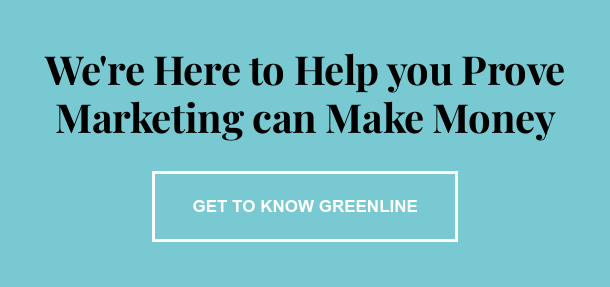In the world of marketing strategy, there is a long list of tactics your business can leverage to increase sales, ROI, and see growth. Choosing the right ‘recipe’ can take some serious work; we’re talking buyer persona development, website content, social media, email marketing, blogging, video marketing, account-based marketing … and the list goes on! Many of these have a place within larger marketing practices, like inbound marketing. But it’s more than just a collection of various marketing efforts, and can often be best understood when compared to outbound marketing.
First things First: What is Outbound Marketing?
Think of outbound marketing as a more ‘traditional’ form of marketing. It seeks to push ‘out’ messaging in front of potential customers with the idea of bringing them in. Traditional channels of outbound marketing often include marketing avenues like TV, newspapers, radio, billboards, direct mail, and cold calling. However, in the digital era, marketers still use these outbound tactics in the form of paid ads. Outbound marketing is used in hopes that somewhere within that large audience, a small fraction of people, who are generally interested, will engage.
One downside to outbound marketing is that nobody asks for it. It’s not necessarily considered content that people are actively seeking out. It's simply placed in front of them. For this reason, many marketers believe outbound marketing isn't nearly as effective as inbound marketing. In a survey, 30% of all respondents said paid mass advertising is the most overrated form of marketing. That isn’t to say that outbound marketing can’t be effective in other ways, though. When it comes to email and tailored outbound tactics, open rates were around 17.8% and CTRs were up to 14%.
And to be clear - outbound marketing is ‘bad’ or ‘wrong’ - it all depends on your business, what audience you’re trying to reach, and what your goals are. If your brand has a well-written strategy and plan of action for its outbound marketing efforts, chances are it will reflect success. Outbound marketing tactics still present value, when executed in targeted ways or in correlation with matched inbound marketing efforts.
What is Inbound Marketing?
Instead of pushing out information in mass forms, inbound marketing focuses on attracting the right people to your product or service with a targeted approach. This style of marketing doesn’t always put banners or online ads smack-dab in the middle of the screen when customers are searching the web. Instead, it leverages tactics like blogging, social media, content creation, video, and SEO to bring in customers. 55% of marketers say that blogging is their top inbound marketing strategy. Inbound marketing focuses on who your buyer persona is and creating content that will organically bring them in to learn more about your products or services. Persona-driven content generated by inbound can increase SQLs by 45%!
Think of inbound marketing as focusing on your best prospects and not just casting a large net in hopes that a few will become customers. That’s why tactics like blogs and social media are so important to inbound marketing. You can tailor your brand’s content to fit the needs of your audience - the questions, problems, frustrations they have. This will not only create more leads but also create more authentic engagements and connections with your audience.
3 Key Differences Between Inbound & Outbound Marketing:
1. Educating vs. SellingWhile both aspects are likely important to your business, inbound marketing focuses on the aspect of educating the customer through various channels and encourages your audience to conduct research for themselves based on the information provided. Think of it like a magnet.
Inbound marketing draws people in based on information provided, like a magnet. Outbound marketing is more focused on selling the brand to customers. Getting the name and face of your brand out there to whoever, wherever, is more important than focusing on a smaller group of people. Think of outbound marketing as a megaphone, it uses tactics to get the brand in front of customers as ‘loudly’ and to as many people as they can.
Outbound marketing is more of a one-way conversation. The message(s) talk at whoever is willing to listen and pay attention but aren’t always truly interacting with the audience. Inbound marketing, on the other hand, is interacting with customers in a variety of ways. Whether it be curating content to match the consumer’s needs or putting out generalized information on their social media, answering specific questions in a blog post, or creating a training or troubleshooting video, they allow the customer to come to them.
With inbound marketing, your audience is raising their hand and choosing to interact or engage with you. With outbound marketing, the marketer is interrupting the daily activities of the customer to showcase their messaging and brand. An example of this could be with a pop-up ad. Many people don’t like the intrusive factor of pop-up ads. For example, 81% of consumers have closed a browser due to a pop-up ad.
Whatever marketing strategy is best for your business, make sure there’s a solidified plan behind it. Without a plan, both marketing methods can provide meaningless and useless information to consumers, and lack impactful results. Be thoughtful when putting out messages to your audience, big or small. After seeing the ins and outs of inbound and outbound marketing, which one seems right for your business?




